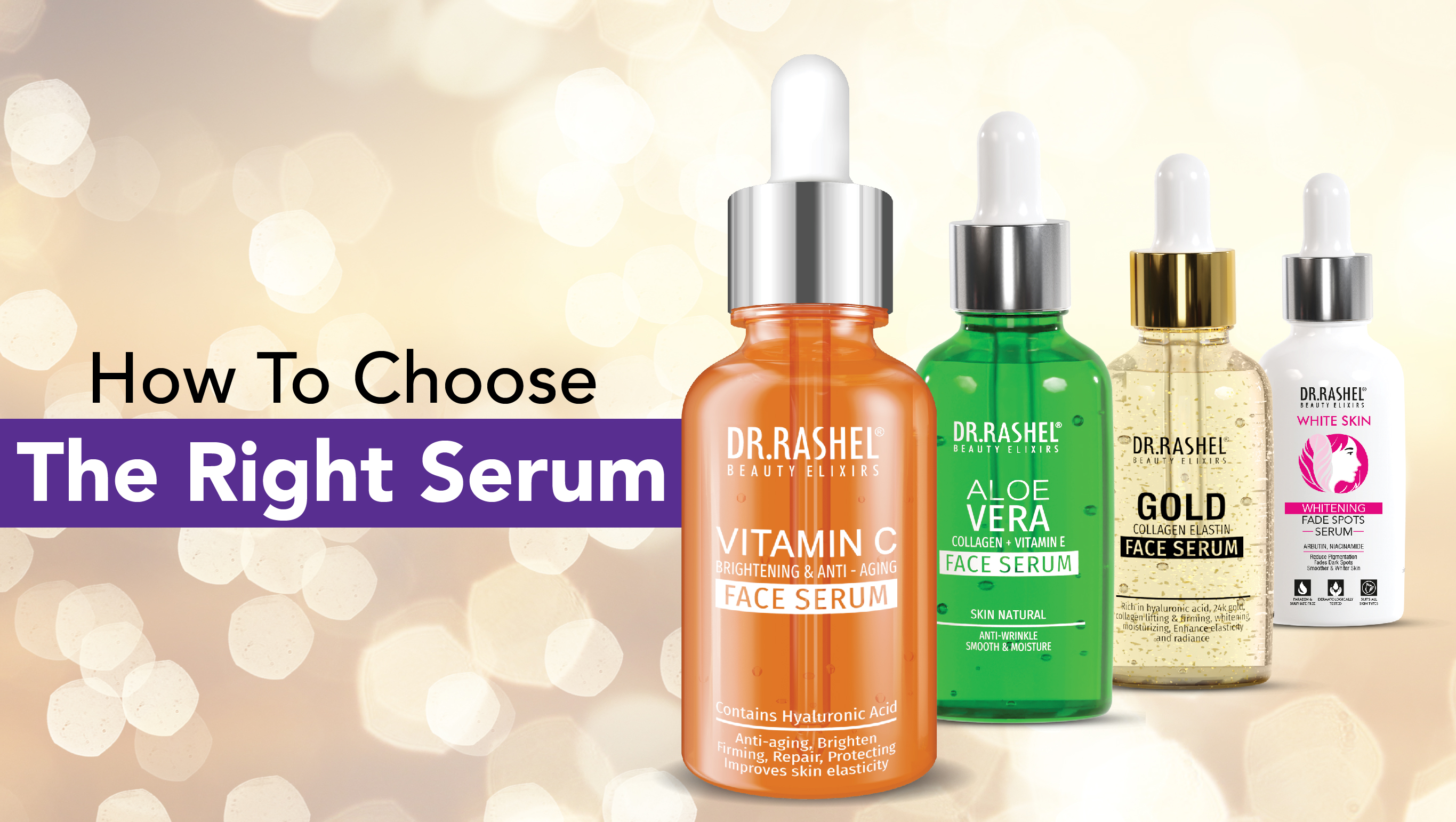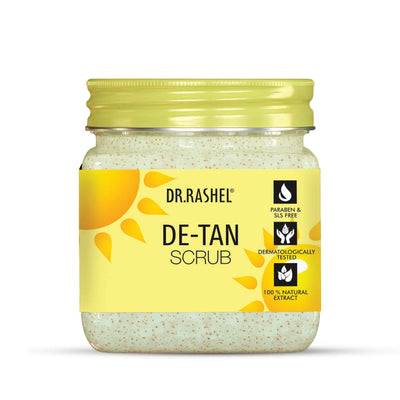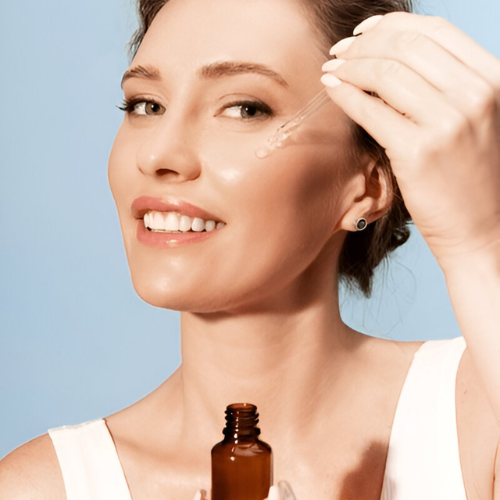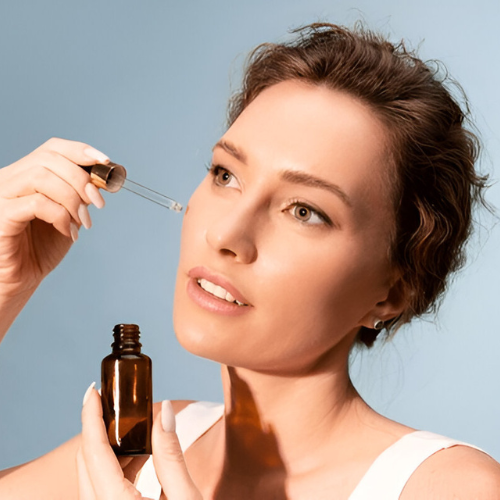
Table of Contents
- What is Face Serum?
- What are Different Types of Serum?
- How to Choose the Right Face Serum Based on Skin Type?
- How to Choose the Right Face Serum Based on Skin Concern?
- Best Ingredients to Consider in a Serum?
- How to Apply a Face Serum?
- Tips Before Buying a Serum
- Takeaway
- FAQ’s
Beginners to skincare enthusiasts, everyones talking about serums! Cute glass bottles with little droppers, makes you feel like a skincare diva! Serums are easy to use and can quickly become a staple in your routine.
In this blog, we'll explore the factors to keep in mind when selecting a serum that benefits your unique skin needs.
What is Face Serum?
A Face Serum is a skincare product that contains high concentrations of active ingredients like vitamins, antioxidants and peptides and is designed to hydrate and nourish the skin while also addressing specific skin concerns. Serums have a lightweight and fluid consistency that penetrates deep into the skin, delivering potent ingredients to make skin radiant and healthy. Serums are often a part of multi-step skincare routines. Serums help improve skin texture and tone and reduce signs of aging.
What are Different Types of Serum?
Hydrating serums
They contain ingredients like hyaluronic acid or glycerin that help replenish moisture by attracting and retaining water in the skin. Hydrating serums are best for dry or dehydrated skin types.
Anti-aging serums
They contain ingredients like retinol or peptides that help combat signs of aging by promoting collagen production and skin elasticity. Anti-aging serums skin texture by reducing fine lines and wrinkles and making skin look more youthful.
Brightening serums
They contain ingredients like vitamin C or niacinamide that help even skin tone and reduce the appearance of dark spots, dullness and pigmentation. Brightening serums also have antioxidant properties that protect the skin against free radicals.
Soothing serums
They contain ingredients like chamomile or aloe vera that help reduce redness, irritation and inflammation. Soothing serums are formulated to calm irritated or sensitive skin.
Clarifying serums
They contain ingredients like salicylic acid or tea tree oil that help unclog pores and reduce breakouts and blemishes by clearing pores and regulating sebum production. Clarifying serums are suitable for oily or acne prone skin.
How to Choose the Right Face Serum Based on Skin Type?
Dry Skin
For dry skin you should look for hydrating and nourishing serums that are rich in emollients. Key ingredients in the serum should include hyaluronic acid, glycerin or ceramides. These ingredients attract and lock in moisture. It also prevents dryness and restores the skin's barrier
Oily Skin
For oily skin you should look for lightweight and oil-free serums. Key ingredients in the serum should include hyaluronic acid, salicylic acid or niacinamide. These ingredients control excess oil and hydrate the skin without causing clogged pores or breakouts.
Combination Skin
For combination skin you should look for a balanced serum that offers hydration without making skin greasy. Key ingredients in the serum should include hyaluronic acid, niacinamide or vitamin C. These ingredients provide hydration to dry areas and control oil in the T-zone area.
Acne Prone Skin
For acne skin you should look for a gentle and non-comedogenic serum that will prevent breakouts. Key ingredients in the serum should include salicylic acid, tea tree oil or niacinamide. These ingredients prevent clogged pores, reduce acne and inflammation.
Sensitive Skin
For sensitive skin you should look for gentle and fragrance-free serums. Key ingredients in the serum should include aloe vera or chamomile. These ingredients provide moisture and soothe aggravated skin.
How to Choose the Right Face Serum Based on Skin Concern?
Hyperpigmentation and dark spots
To treat hyperpigmentation and dark spots you should use brightening and spot-correcting serums. They include ingredients like vitamin C, niacinamide, alpha arbutin or retinol. These ingredients control melanin production, reduce dark spots and even out skin tone.
Fine Lines and Wrinkles
If you want to fade signs of aging and get a more youthful look you need an anti-aging serum. These serums include ingredients like retinol, peptides, hyaluronic acid or vitamin S. It stimulates collagen production and skin elasticity and reduces the appearance of fine lines and wrinkles over time.
Uneven Skin Tone and Texture
In order to achieve a smooth and glowing skin you should use exfoliating serums. They contain ingredients like glycolic acid, lactic acid and vitamin C. These ingredients promote cell turnover which improves skin texture and gives a brighter complexion.
Sagging Skin
For treating lost firmness and elasticity in skin you should use a firming or lifting serum. These serums contain ingredients like peptides, retinol, vitamin C or hyaluronic acid. They boost collagen and elastin production helping maintain firm and plump skin
Best Ingredients to Consider in a Serum?
Hyaluronic acid
Hyaluronic acid is naturally found in our skin but its levels decrease with time. It is a popular ingredient in skincare that is known to draw moisture from the environment into the skin and make it plump and hydrated. It is lightweight, doesn't clog pores and maintains the skin's elasticity.
Peptides
Peptides stimulate collagen and elastin production which improves skin firmness and elasticity. It reduces the appearance of fine lines and wrinkles, repairs skin damage and enhances the skin's natural barrier.
Ceramides
Ceramides are lipids that help restore and maintain the skin's moisture barrier and protect it from environmental stressors. It hydrates and smoothens the skin and helps maintain the skin's overall health.
Green Tea Extract
Green tea is rich in antioxidants that fights free radicals and protects the skin from environmental damage. It soothes inflammation, reduces redness and irritation. Green tea extract helps reduce dark spots and uneven skin tone
Aloe vera
Aloe vera is a widely used skincare ingredient that soothes and calms the skin and promotes skin healing. It has anti-inflammatory properties that treat skin irritation and prevent breakouts on your skin. Aloe vera gives the skin a cooling and hydrating effect
Salicylic acid
Salicylic acid penetrates deep into the skin to remove excess oil and exfoliate dead skin, clogged pores and acne. It helps reduce inflammation and promotes a smoother, clearer and refined skin texture.
Vitamin C
Vitamin C is a potent antioxidant that helps brighten and even out skin tone. It fights free radicals and protects the skin from environmental damage. Vitamin C stimulates collagen production and prevents premature aging of the skin.
How to Apply a Face Serum?
Step 1: Cleanser
Ensure your skin is clean from dirt, oil makeup and other impurities. Cleansing your skin creates a fresh base for the serum to absorb and work effectively.
Step 2: Toner (optional)
Toner balances the skin's pH and preps the skin for further skincare steps. It also removes any remaining impurities missed during cleansing.
Step 3: Serum
Take a few drops of the serum on your cheeks, nose, chin and forehead and gently massage it into your skin. Avoid using too much product or rubbing the serum on your skin.
Step 4: Moisturizer
Moisturizing your skin will provide hydration, create a protective barrier over your skin and help lock in the benefits of the serum.
Tips Before Buying a Serum
Know Your Skin Type
The type of serum you use mainly depends on your skin type. Using a serum that is best for your skin type will ensure you reap all the benefits. No matter how effective a serum is, if it's not suitable for your skin, it will become ineffective.
Identify your Skin Concern
Different serums target different skin concerns, so it is necessary you understand what your skin needs fixing most and choose a serum accordingly. Knowing what's wrong with your skin makes it easier to use a serum to make it right and get the best results.
Check the Ingredients
Make sure to read the ingredient label on the back of the serum before you put it in your cart. Choose proven effective ingredients and avoid harsh chemical and artificial fragrances.
Consider the Serum Texture
What type of texture the serum has depends again on your skin type. Texture and skin type should match so that the serum absorbs into the skin. Lightweight serums for oily and acne prone skin and thicker serums for dry skin.
Look for Customer Reviews
Reviews and recommendations from people who have used the product can give you insights into the effectiveness of the serum. Read customer reviews on trusted and official websites only.
Start Slow
When using a serum the results are gradually noticeable over consistent use. Use the serum 2-3 times a week and slowly increase the frequency based on how your skin reacts.
Takeaway,
Serums elevate your skincare routine and address skin concerns with its concentrated ingredients. However before opting for a serum, a smart move would be to make sure about what your skin type is, what your skin needs and then select a product that will provide powerful results for those needs. With all this mind, you are now prepared to select the right fit for you!
FAQ’s
How do I know which serum to use?
To choose the right serum, you need to identify your skin type and concern first. For dry skin opt for hyaluronic acid serum while to fight aging opt for retinol or peptide serums. Ensure that the serum is formulated for your skin type.
Which serum is best for skin whitening?
For skin whitening, choose Dr. Rashel’s White Skin Face Serum as it is formulated with alpha arbutin and niacinamide that helps reduce pigmentation and brighten and even out skin tone.
What serum to use at night?
At night sin goes into repair mode and thus needs extra hydration. The Vitamin C Night Serum contains hyaluronic acid that hydrates the skin while reducing fine lines, wrinkles & aging spots.
Can we use a moisturizer with serum?
Yes! It is necessary to use a moisturizer after a serum. It creates a barrier that helps lock in the active ingredients of the serum, allowing them to work effectively.
When is the Right Time to Use Serum?
The right time to use a serum is after cleansing and toning your face. Clean skin allows the serum to absorb better and work at its maximum capacity.
Can I use serum and night cream together?
Yes! You can use a serum followed by a night cream. Serums go first so that the ingredients absorb into the skin and night cream creates a protective barrier that locks in moisture.





.png)





